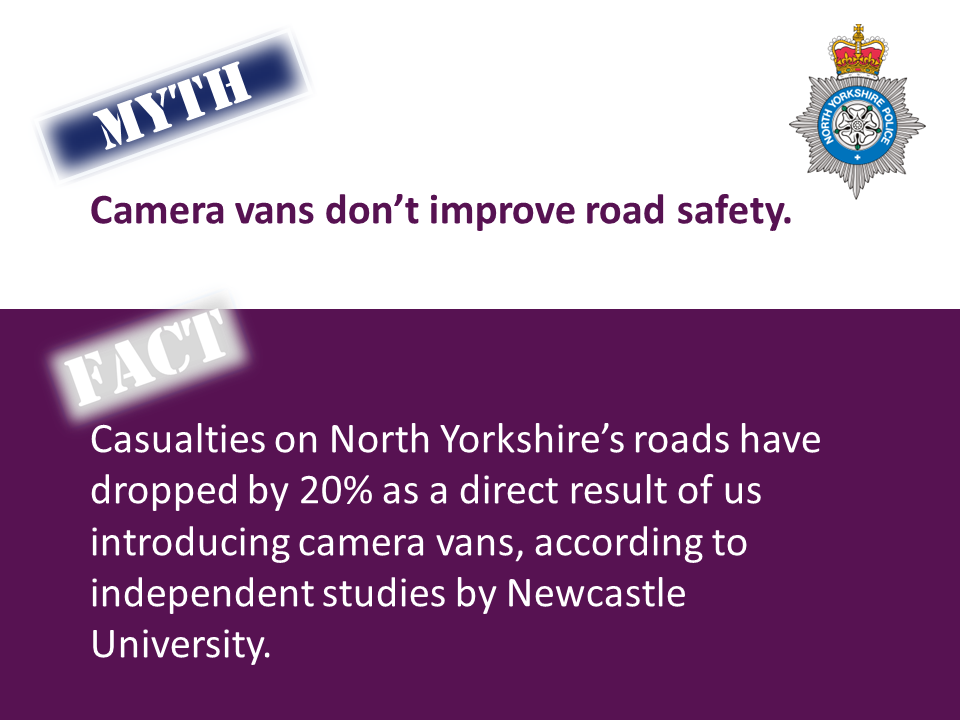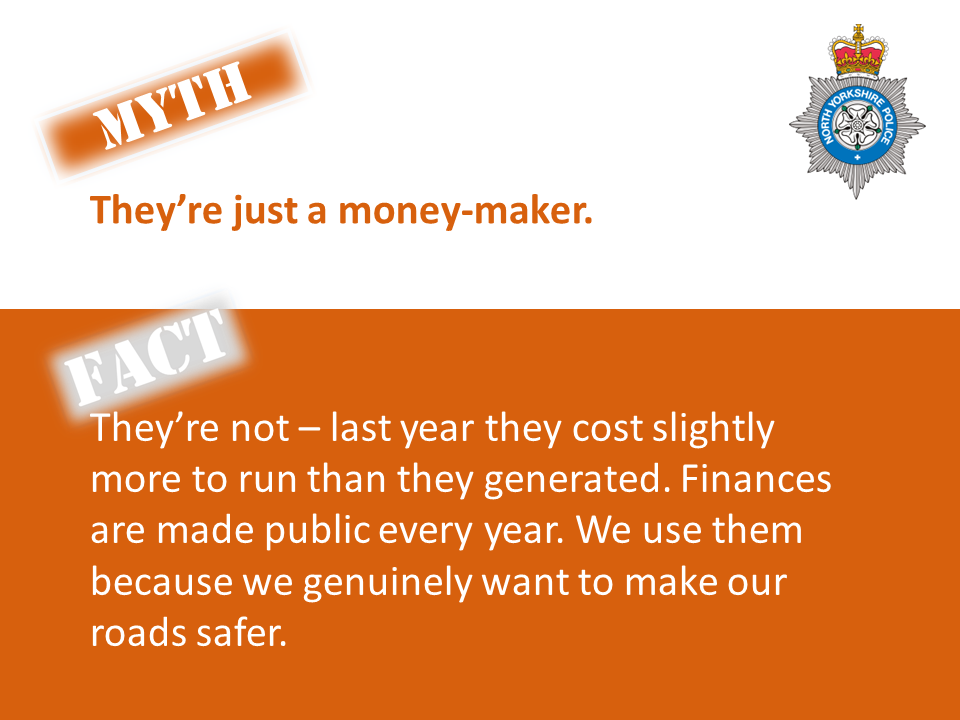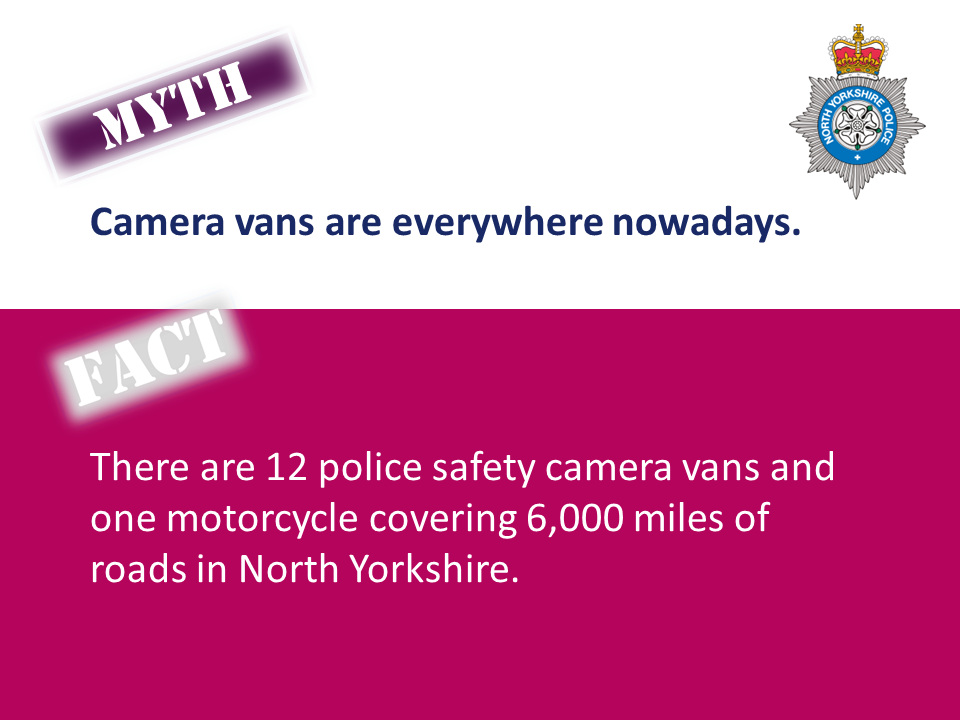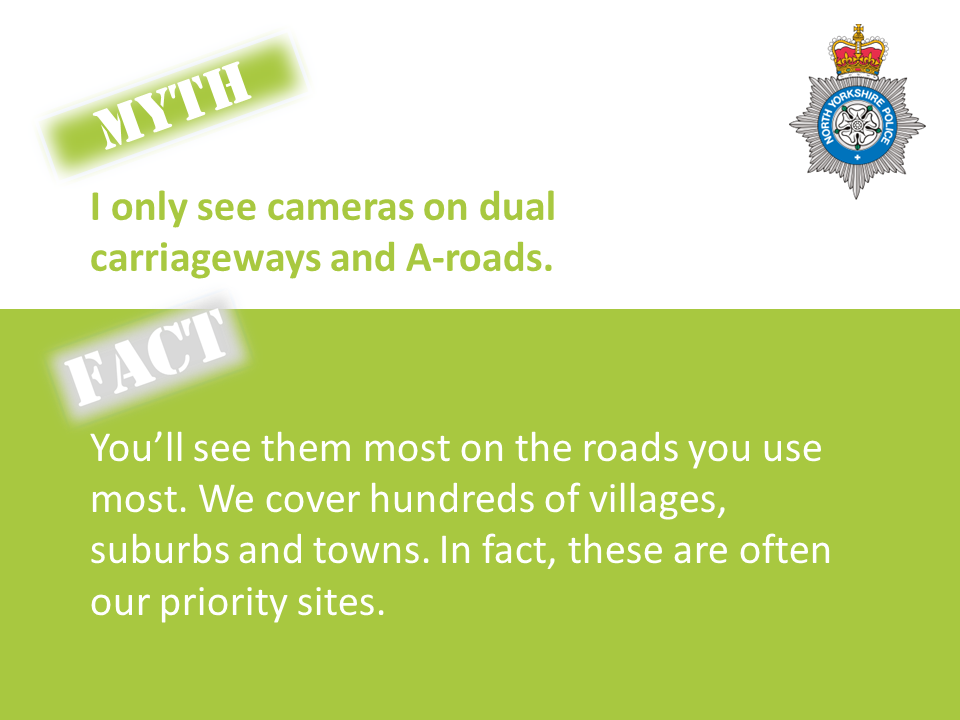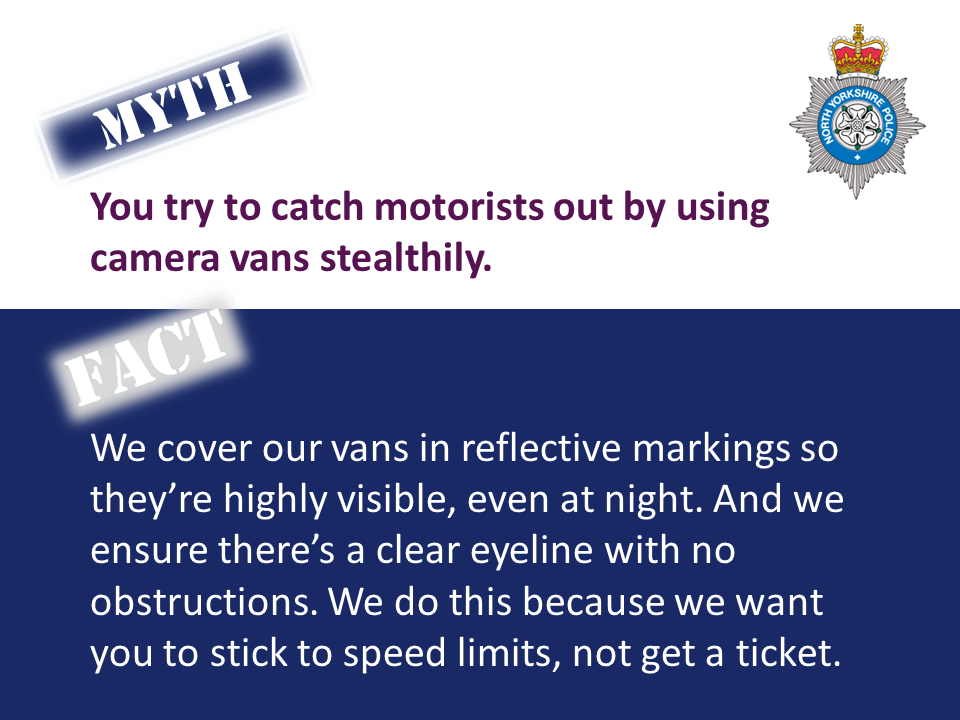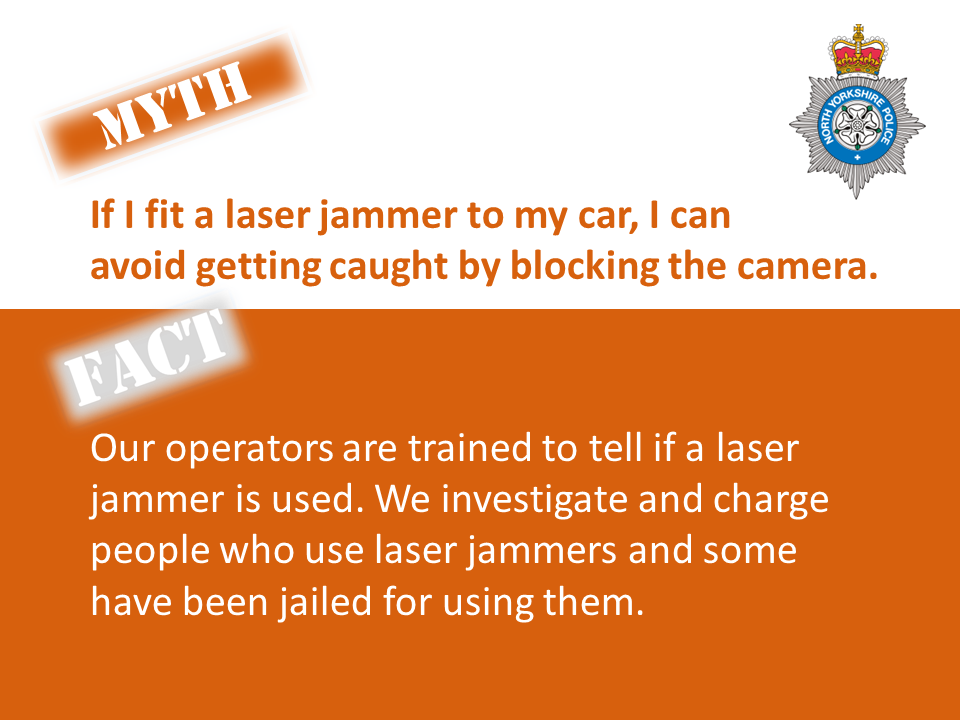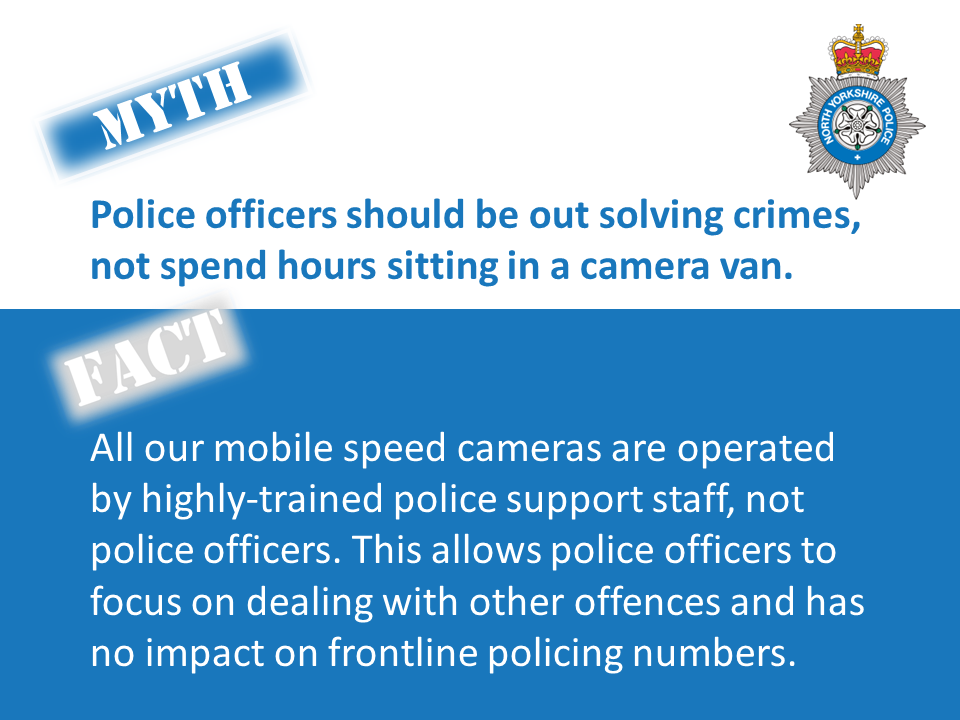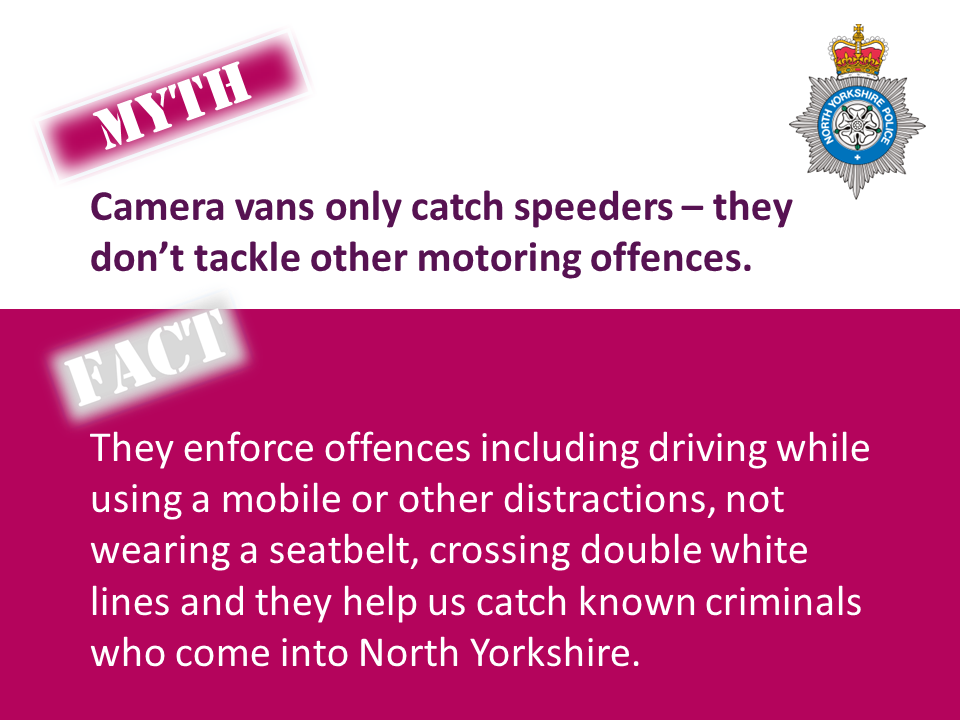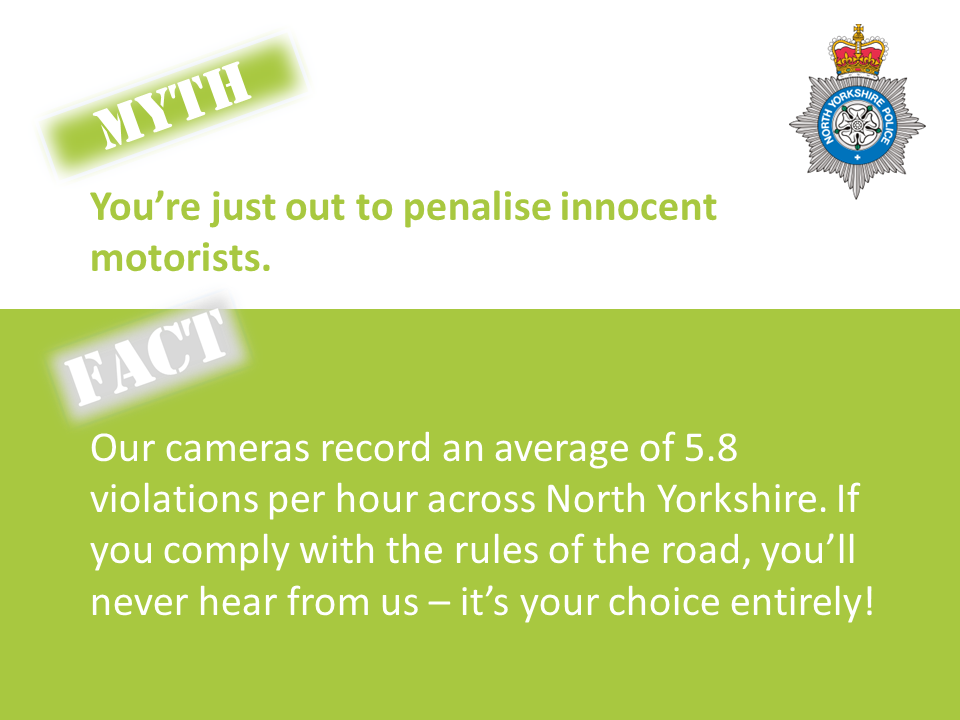Speeding
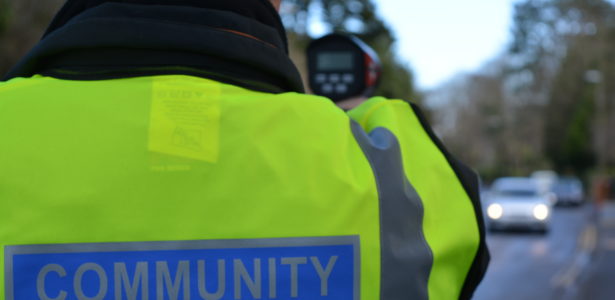
If you have a concern about vehicles speeding through your community the first thing you should do is to report it.
Commenting on road safety, Commissioner Zoë Metcalfe said:
“I am always listening to our communities’ concerns, through local meetings, my advice surgeries and correspondence with my office.
“Road safety is one of my key priorities and one of my first jobs was to publish the new Safer Roads Strategy for North Yorkshire and York.
“Although I am the link between the public and the police and fire and rescue service – to make sure they do a good job on the public’s behalf, operational policing, such as deciding where and when to enforce the law, is the Chief Constable’s responsibility.
“I regularly and publicly hold the Chief Constable to account during my public accountability meetings, which are broadcast live and include questions from the public on my chosen topic for scrutiny.
“I am hearing that road safety is becoming more of an issue for some communities and next year, 2023, I will be holding a public accountability meeting to look, in depth, at how North Yorkshire Police are keeping our roads and communities safe”
“Speeding motorists and anti-social behaviour on our roads has always been a major concern with communities and I will continue to raise this with the Chief Constable to ensure that the force are taking the most appropriate action necessary.”
On this page
- Reporting speeding concerns
- Report bad driving
- Community speed watch
- Speeding fines
- North Yorkshire Police bust 10 common myths about mobile safety cameras…
- Myth 1: Camera vans don’t improve road safety.
- Myth 2: They’re just a money-maker.
- Myth 3: You park camera vans in the locations that make the most money.
- Myth 4: Camera vans are everywhere nowadays.
- Myth 5: I only see camera vans on dual carriageways and A-roads.
- Myth 6: You try to catch motorists out by using camera vans stealthily.
- Myth 7: If I fit a laser jammer to my car, I can avoid getting caught by blocking the camera’s laser.
- Myth 8: Police officers should be out solving crimes, not spend hours sitting in a camera van.
- Myth 9: Camera vans only catch speeders – they don’t tackle other motoring offences.
- Myth 10: You’re just out to penalise innocent motorists.
Reporting speeding concerns
To report a site causing concern due to speeding vehicles you must provide all of the following information:
- Your name and contact details (address, email, telephone)
- Details of the location where speeding is occurring (road name/ number, town/ village, landmark or location description e.g. house number or junction)
- When the speeding is occurring e.g. whether there are any days or times of the week in which the problem is worse
- What type of vehicle causing the problem e.g. cars, motorcycles, lorries, buses
- Whether the vehicles are being driven by general traffic, local residents or employees of a particular company
- Any additional information which you think may help us to understand your concern
Report your speeding concern online at: Tell us about a speed concern | North Yorkshire Police
Alternatively:
- Email speedconcerns@northyorkshire.police.uk
- Write to: North Yorkshire Police Traffic Bureau, PO Box 809, York, YO31 6DG
Once you have completed the form, the following process will be followed: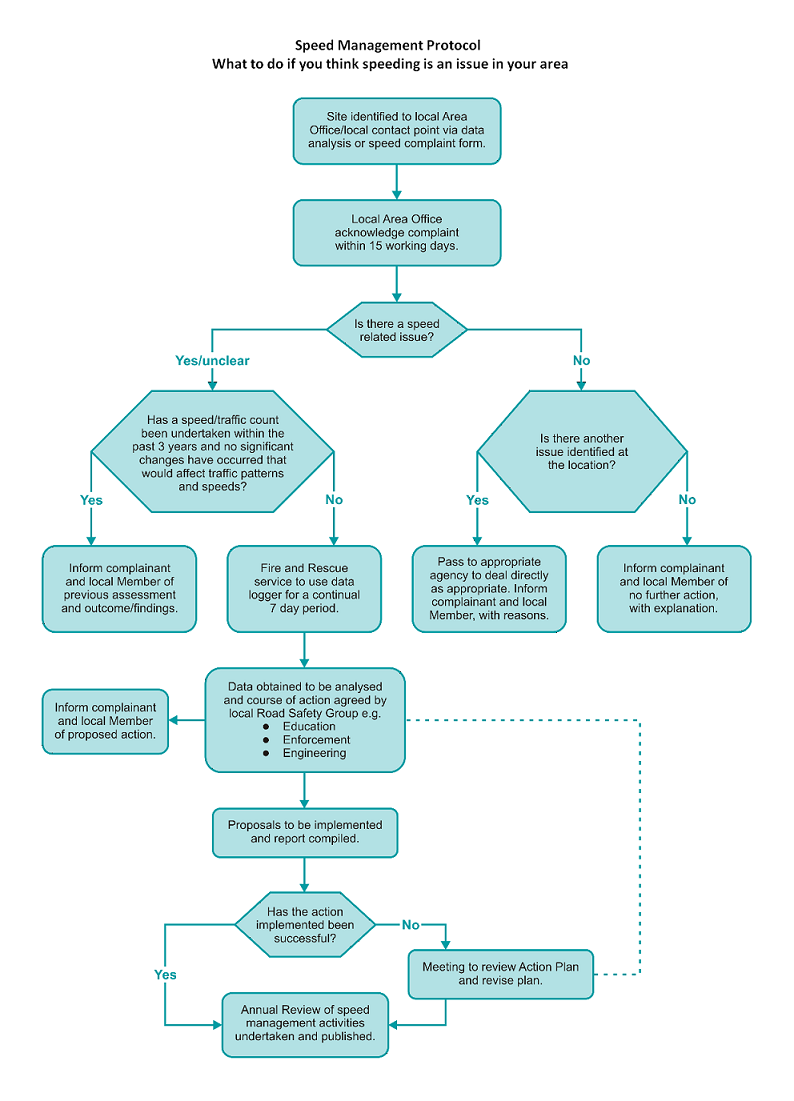
Once a Speed concern report is submitted an investigation will be undertaken to examine accident data and traffic speeds at that specific location. This investigation will determine what action will be taken.
When you submit your form you will receive an acknowledgement and once the investigation is completed you will be informed of the conclusions.
Report bad driving
North Yorkshire Police’s Operation Snap encourages those who witness the anti-social use of vehicles or poor driving, to report them online, as part of their road safety campaign. Members of the public are also encouraged to upload dash cam or mobile phone footage of dangerous or anti-social driving they have witnessed.
A profile of information will be collated for the police to assess and act upon, to ensure guidance and advice can be provided to those who need it.
Community speed watch
Drawing drivers’ attention to speed limits in areas where communities say it is affecting their quality of life. Community Speed Watch also educates drivers about the effects that anti-social road use can have on local people.
Find out more about Community Speed watch
Speeding fines
If you have a question about a speeding fine issued by North Yorkshire Police you will need to contact the North Yorkshire Police Traffic Bureau:
- Tel: 01904 933 151
- E-mail: trafficbureau@northyorkshire.police.uk
North Yorkshire Police bust 10 common myths about mobile safety cameras…
and give the facts that might change your opinion of them.
Myth 1: Camera vans don’t improve road safety.
Truth: Casualties on North Yorkshire’s roads have dropped by 20% as a direct result of us introducing camera vans, according to independent studies by Newcastle University (2018). A new study is currently underway again with Newcastle University to further look into the impact of all aspects of road safety across North Yorkshire and York and see how the results may differ based on the last five or so years of road safety initiatives.
Myth 2: They’re just a money-maker.
Truth: They’re not – in 2018 they cost slightly more to run than they generated. We use them because we genuinely want to make our road safer, and we can see they are making an impact.
Myth 3: You park camera vans in the locations that make the most money.
Truth: We decide where to deploy our camera vans based on lots of different factors based on threat, risk and vulnerability. These include intelligence around previous collisions, traffic flow, events happening in an area, demand from communities and even the weather. We never consider locations based on the revenue they could generate.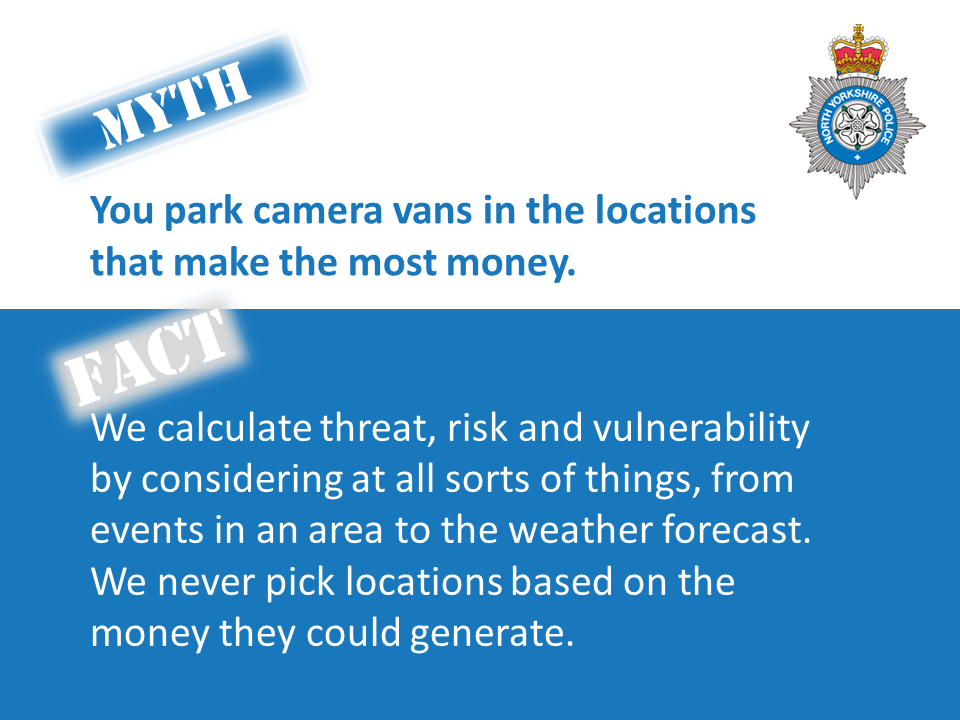
Myth 4: Camera vans are everywhere nowadays.
Truth: In 2018 there were 12 police safety camera vans and one motorcycle covering 6,000 miles of roads in North Yorkshire. Today, 2023, there are 10 safety camera vans and two motorbikes.
Myth 5: I only see camera vans on dual carriageways and A-roads.
Truth: We cover hundreds of sites that include villages, towns and other residential areas. In fact, these are often a priority for us. More people see camera vans on dual carriageways as these are generally the roads with the highest traffic flows and unacceptably high speeds, and single carriage A-roads are statistically our most dangerous. We also run Community Speed Watch – a scheme to help residents tackle speeding and improve road safety in their community.
Myth 6: You try to catch motorists out by using camera vans stealthily.
Truth: Our camera vans are covered in reflective markings so they’re highly visible, even at night. We assess all camera van locations to ensure there’s a clear eyeline with no obstructions.
Myth 7: If I fit a laser jammer to my car, I can avoid getting caught by blocking the camera’s laser.
Truth: Our operators are trained to tell if a laser jammer is used. We investigate and charge people who use laser jammers and some motorists have been jailed for using them.
Myth 8: Police officers should be out solving crimes, not spend hours sitting in a camera van.
Truth: All our mobile speed cameras are operated by highly-trained police support staff, not police officers. This allows police officers to focus on dealing with other offences and has no impact on frontline policing numbers.
Myth 9: Camera vans only catch speeders – they don’t tackle other motoring offences.
Truth: This is simply incorrect. They enforce a range of offences including driving while using a mobile phone or other distractions, failure to wear a seatbelt, contravening double white lines along with dangerous and careless driving. In addition, they are fitted with automatic number plate recognition cameras to gather intelligence about drivers who come into North Yorkshire and commit crimes such as drug dealing or theft.
Myth 10: You’re just out to penalise innocent motorists.
Truth: In 2018 the cameras record an average of 5.8 violations per hour across North Yorkshire. In 2022 this fell to 5.5 violations per hour.
If you comply with the rules of the road, you’ll never hear from us – it’s your choice entirely!

